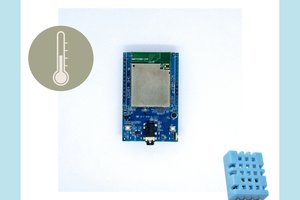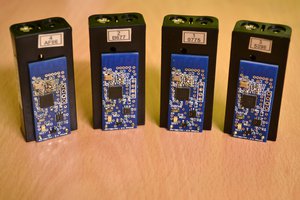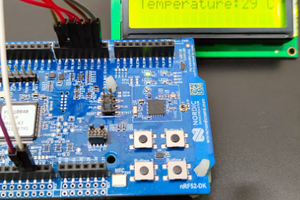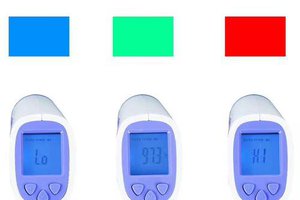The heat exchanger testkit consists of 3 main pieces. The Main controller, the temperature sensor rings and the massflow meters.
The main controller has an Arduino Mega, graphical LCD, SD card reader and all other components to drive the testkit. It connects to all other elements either through SPI or Serial. This controller does all the actual testing.
The temperature sensor ring has several types of temperature sensor, a pressure sensor and a humidity sensor. The ring has an Arduino Nano to gather all the values. The temperature sensors are DS18B20 and 10k thermistors. Before the ring is used the 10k thermistors are calibrated to the DS18B20 sensor. The 10k thermistors provide the fast reading, while the DS18B20 is used for accurate readings. The pressure sensor is a MD-PS002 the ring has a differential amplifier to condition the signal. The humidity sensor can be any of the DHT sensors, but I am using the DHT11.
The massflow meter is the most interesting part of this project. It consists of a powerful fan, a heat source with PWM, temperature sensors and current sensor. The fan is a radial fan sourced from a server and is 2.5A at 12V. The massflow meter can control the speed of the fan. The heat source is a stripped hairdryer. It is 1200W and has the motor disabled but not removed. The temperature sensors are again DS18B20 and 10k thermistors. There is a non invasive current sensor that is capable of 30A. This is a bit much for this project, but if it proves to inaccurate, I will replace it with a 10A model. The triac is wired to provide AC PWM to the heat source.
The massflow meter works by measuring the amount of power going to the heat source. By then measuring the temperature difference between the incoming and the outgoing air, the massflow meter can determine the amount (mass) of air that has passed. Air has a specific heat of around 1.005 kJ/(kg*K) at room temperature.
An example, if the energy going to the heat source is 500W, and the temperature rises by 10oC, it means that around 0.05kg of air has passed that second (or around 0.04m3, or 4 buckets worth).

 Daphne
Daphne

